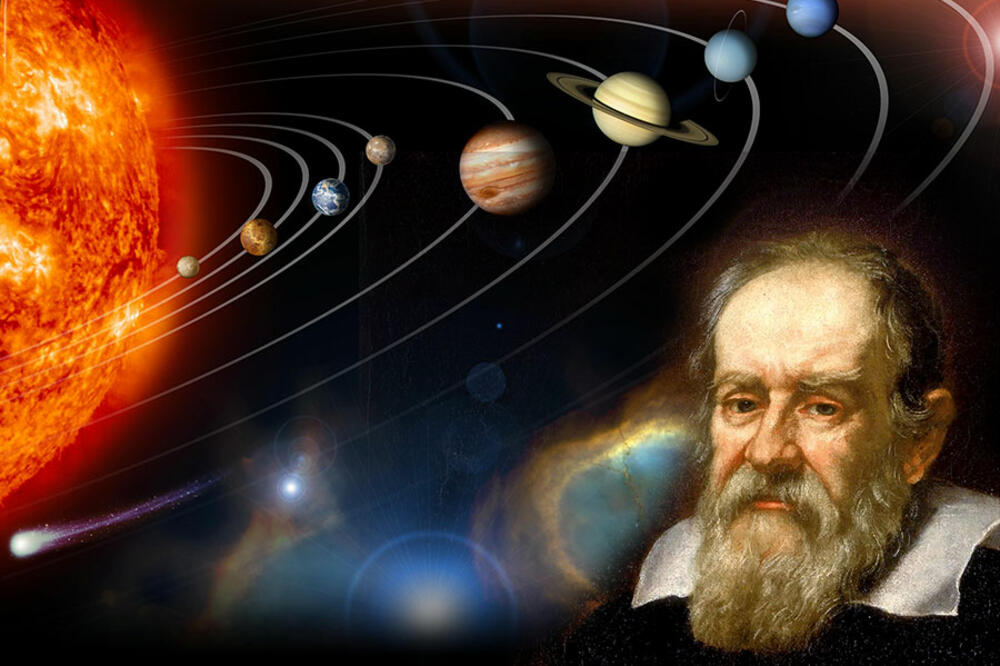"Eppur si muove", i.e. "it still moves" is one of the most famous sentences in the history of science. Allegedly, it was uttered by Italian physicist, mathematician and astronomer Galileo Galilei (1564 - 1642), who is considered by some to be the father of modern science, before the court of the Inquisition. For centuries, that sentence has been the leitmotif of the conflict between science and religion, that is, scientists and high representatives of the Church.
The last such conflict in the case of Galileo erupted in 2008, when physicists from the Sapienza University in Rome opposed the arrival of the then Pope Benedict XVI because in a speech he, still as Cardinal Ratzinger, repeated the claim of the philosopher Feyerabend that "the church process against Galileo was justified and fair”.
The famous American-Israeli astrophysicist Mario Livio (75), who recently published a new biography of the famous scientist "Galileo and Science Deniers", deals with the legend of the famous phrase "It still moves". Livio believes that this legend sounds too good to be true, reports Jutarnji list.
"It would have been crazy if Galileo said that in front of the Inquisition," says Livio, who has long researched the origin of the famous sentence and published a scientific paper on his findings.
What do we know about Galileo's life?
He was born in Pisa, in a well-to-do family with six children. His father Vincenzo Galileo was a music theorist, so little Galileo learned to play various instruments as a child. He thought about becoming a priest, but at his father's urging, he enrolled in medicine at the University of Pisa, where he realized that his love was actually mathematics. Later he also taught mathematics at the universities of Pisa and Padua.
Not much is known about his private life. Galileo was not married, but for 18 years he was in a relationship with the Venetian beauty Marina Gamba, who bore him three children, daughters Virginia and Livia and son Vincentius. Since his illegitimate daughters were a burden to him, Galileo sent them as teenagers to a convent near Florence, and later recognized his son as his heir with the help of political connections. Despite Galileo's procedure, Virginia, that is, the venerable Maria Celeste, was extremely attached to her father and took care of him. She died young, at the age of 34. American scientific publicist Dava Sobel researched the life of Maria Celeste and found 124 letters that she wrote to her father as a nun in Italian archives. This is how the book "Daughter of Galileo" was created, which was a bestseller in the early 2000s.
What happened in 1610?
A turning point in Galileo's life occurred in 1610, when he made miraculous discoveries with the help of a telescope. He discovered that the Moon was a rocky body similar to the Earth and that Venus showed changes, which was direct evidence that it revolved around the Sun. With the help of a telescope, Galileo saw that four moons circled Jupiter and that the Sun had spots that showed it was rotating.
Galileo's discoveries were a strong confirmation of the heliocentric theory of the universe of the Polish astronomer Nicolaus Copernicus (1473-1543) and completely destroyed the previous image of the world, built mainly on the biblical Book of Genesis, according to which the Earth is the center of the world and all celestial objects revolve around it.
Those discoveries caused a lot of problems for Galileo because the Church did not approve of them, so in 1616 it forbade him to teach Copernicus' teachings. However, Galileo could not come to terms with the imposed ban, so in 1632 he published the famous work "Dialogo sopra i due massimi sistemi del mondo tolemaico e Copernicano" in which he presented the Copernican system. Because of this, in 1633 he was taken to Rome in chains before the court of the Inquisition. He had to publicly renounce the teachings of Copernicus and was declared a heretic, for which he spent the rest of his life under house arrest. The process that the Inquisition led against Galileo became a symbol of the conflict between science and religion, and the Church was given the centuries-old stigma of "the enemy of knowledge". It was not until 1992 that Pope John Paul II apologized for the crimes of the Inquisition and admitted that Galileo suffered a lot at the hands of people and church bodies.
When does a legendary phrase appear in books?
The earliest biography of Galileo was written by his protégé Vincenzo Viviani in 1655/1656. years. According to Livy, the sentence "Nevertheless it moves" appears for the first time in a passage in Giuseppe Baretti's "Italian Library" which was published in 1757, more than 100 years after Galileo's death. That could be one indicator that the story is a myth.
Italian historian Antonio Favaro, who studied Galileo's life and work for four decades and published the "Works of Galileo Galilei", was also involved in determining the origin of the famous phrase. In 1911, Favaro also published several articles in which he explained in detail his efforts to determine the origin of the famous phrase.
That year, Favaro received a letter from the Belgian Jules Van Bele, who stated that he owned the painting, created around 1643, that is, shortly after Galileo's death in 1642. The painting is attributed to the Spanish painter Bartolomeo Esteban Murillo, and shows Galileo in prison holding a nail in his right hand that he used to carve the path of the Earth around the Sun on the wall, with the words "Eppur si muove" written below. Van Belle, who sent the biographer Favaro a photograph of Murillo's painting, believed that the work of art once belonged to the military commander Octavio Piccolomini, brother of the Archbishop of Siena. It is interesting that Galileo served the first six months of house arrest in the archbishop's home in Siena. This opened up the possibility that Galileo had spoken the sentence, just not in front of the Inquisition.
How did Livio find the mysterious painting?
However, Muril's painting has never been examined by independent art historians. When Mario Livio decided to investigate Favaro's findings after more than a century, he found that no one knew where the intriguing painting was.
"First I wanted to get an expert opinion on the attribution of the painting to Murillo. To this end, I sent a copy of the painting to experts on Murillo painting, two in Spain, one in Great Britain and one in the USA. All of them, independently of each other, responded that although it is difficult to provide conclusive opinions based on the photograph, when considering the style, subject matter and relevant historical facts they are fairly confident that Murillo did not paint the picture of 'Galileo in Prison.'One expert told me that the painter was probably not Spanish and another suggested that the painting originates from the 19th century," Livio said.
After about a year of searching, Mario Livio finally rediscovered the whereabouts of the mysterious painting. One of Van Bele's descendants sold the painting in 2007 at an auction in Antwerp, and the auction house Campo&Campo dated the painting to the 19th century. The representative of the auction house confirmed to Livija that they found neither the author's signature nor the year of creation of the painting.
"So how can we answer the question of whether Galileo said the famous famous words? Historical evidence suggests that the story first appeared, or at least was documented, only in the mid-18th century, long after Galileo's death. This makes it more likely that this motto of questionable authenticity. Regardless, it would be exciting if the current owner of the 'Galileo in Prison' painting would allow it to be thoroughly researched to determine the exact age of the work. Even if Galileo never spoke those words, they carry some significance for our current troubled times when even proven facts are under attack from science deniers. Galileo's legendary intellectual defiance, 'despite what you believe, these are facts,' becomes more important than ever," concluded Mario Livio in Scientific American .
Bonus video:





